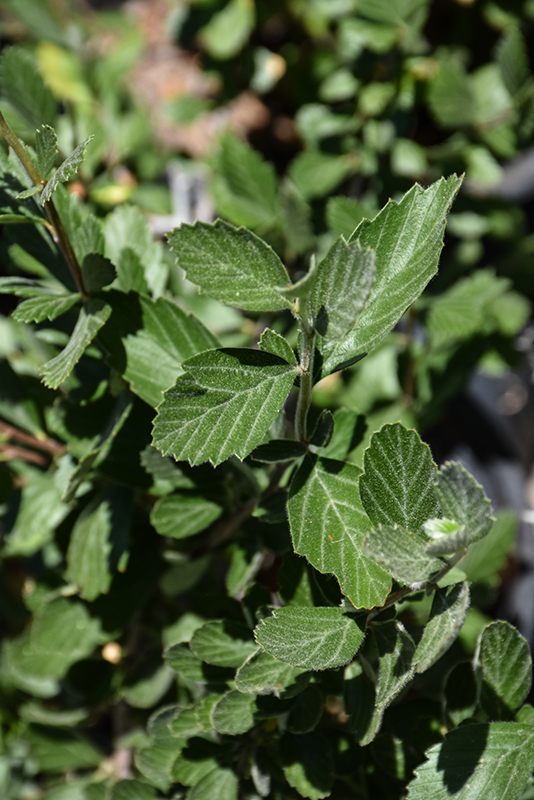Alderleaf Mountain Mahogany
Cercocarpus montanus
Height: 12 feet
Spread: 8 feet
Sunlight:
![]()
Hardiness Zone: 5a
Other Names: Alder-leaf Mountain Mahogany
Description:
An evergreen large shrub or small tree that is great as an accent plant or screen; an attractive plant for dry situations; leathery dark green leaves have fuzzy silver undersides; insignificant flowers are followed by showy, feathery seed heads
Ornamental Features
Alderleaf Mountain Mahogany is primarily grown for its highly ornamental fruit. The white fruits are carried on showy plumes with silver overtones, which are displayed in abundance from late summer to early fall. It has attractive dark green foliage with silver undersides. The fuzzy oval leaves are highly ornamental and turn coppery-bronze in the fall, which persists throughout the winter. The smooth brick red bark is extremely showy and adds significant winter interest.
Landscape Attributes
Alderleaf Mountain Mahogany is a multi-stemmed evergreen shrub with an indistinguished habit of growth. Its average texture blends into the landscape, but can be balanced by one or two finer or coarser trees or shrubs for an effective composition.
This is a relatively low maintenance shrub, and is best pruned in late winter once the threat of extreme cold has passed. It has no significant negative characteristics.
Alderleaf Mountain Mahogany is recommended for the following landscape applications;
- Hedges/Screening
- Windbreaks and Shelterbelts
- Naturalizing And Woodland Gardens
Planting & Growing
Alderleaf Mountain Mahogany will grow to be about 12 feet tall at maturity, with a spread of 8 feet. It has a low canopy with a typical clearance of 1 foot from the ground, and is suitable for planting under power lines. It grows at a slow rate, and under ideal conditions can be expected to live to a ripe old age of 100 years or more; think of this as a heritage shrub for future generations!
This shrub should only be grown in full sunlight. It prefers to grow in average to dry locations, and dislikes excessive moisture. It is considered to be drought-tolerant, and thus makes an ideal choice for xeriscaping or the moisture-conserving landscape. It is not particular as to soil pH, but grows best in sandy soils, and is able to handle environmental salt. It is somewhat tolerant of urban pollution. This species is native to parts of our region.
